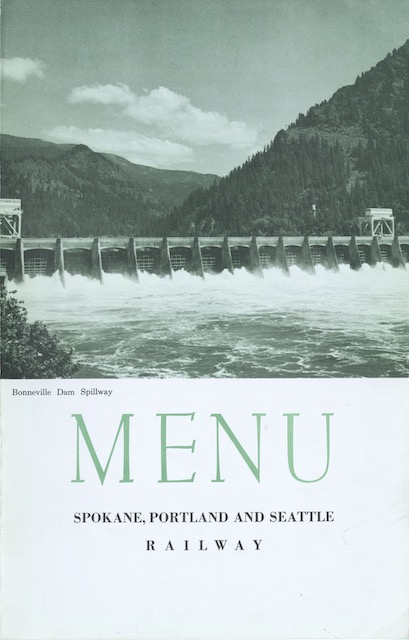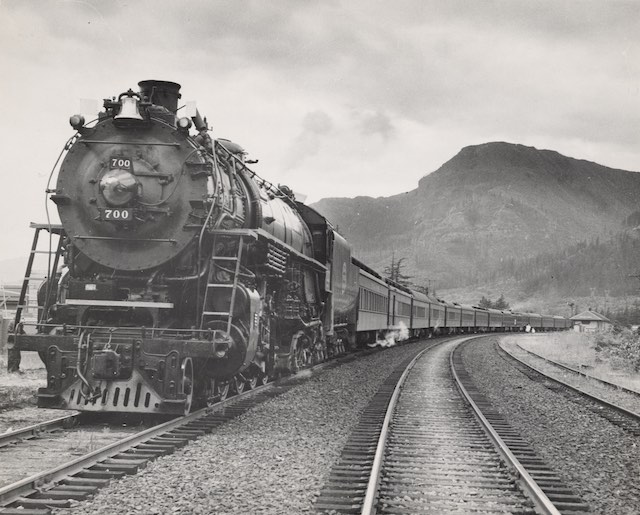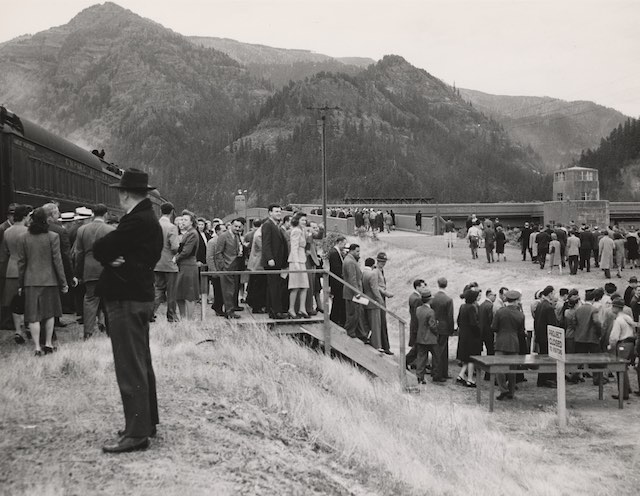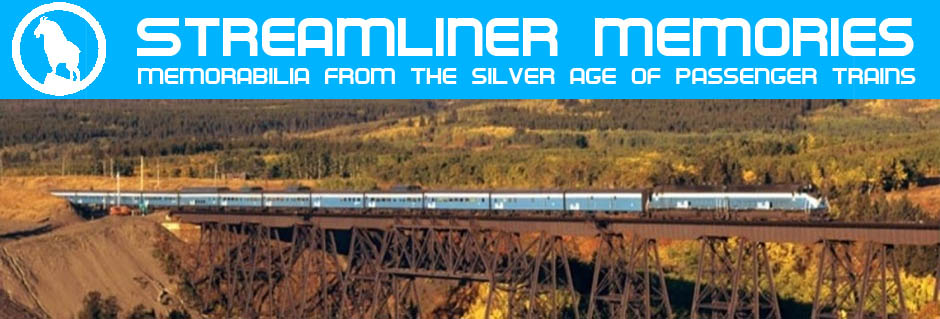We’ve previously seen a dinner menu featuring Bonneville Dam on its cover. While the dinner menu was printed in 1-58, this one was printed in 2-58.
 Click image to download a 936-KB PDF of this timetable.
Click image to download a 936-KB PDF of this timetable.
Like Hoover Dam, Bonneville was an important symbol of America’s pre-war industrial might. Built partly to promote local economic development and partly as a Depression-era jobs program, Bonneville generated electricity that powered homes, aluminum plants, and other industries, and later dams built further up the Columbia provided irrigation water to farmers. At the same time, the dams reduced the salmon that once thrived in the Columbia River; although Bonneville had a fish ladder, the Grand Coulee did not and a huge fish run was completely wiped out when that dam was completed.
 Photo by Oregon Journal photographer Leslie Thomas Ordeman of the United Nations “Victory Train” stopping at North Bonneville is in the Oregon Historical Society collection. Click image for a larger view.
Photo by Oregon Journal photographer Leslie Thomas Ordeman of the United Nations “Victory Train” stopping at North Bonneville is in the Oregon Historical Society collection. Click image for a larger view.
After the first meeting of the United Nations in San Francisco, delegates required several trains to go home. To avoid wartime traffic congestion, each train took a different route, with one of them going to Portland and then east over the SP&S. Led by the SP&S 700, the train stopped at North Bonneville so the United States could show off its still-new dam, which had been completed just two years before.
 UN delegates and guests deboard the train to tour the dam shown at right. Photo by Ordeman is in the Oregon Historical Society collection. Click image for a larger view.
UN delegates and guests deboard the train to tour the dam shown at right. Photo by Ordeman is in the Oregon Historical Society collection. Click image for a larger view.
The Columbia River dams were a mixed blessing for the railroads. On one hand, the government paid for new routes for the SP&S and Union Pacific at higher ground. But when the Columbia River dams were completed, barges could reach as far as Lewiston, Idaho, taking grain and other traffic away from the railroads. During negotiations for the reroute due to a later dam, someone representing the government asked railroad officials why they weren’t willing to pay part of the cost, since they were effectively getting an upgrade. “Your dams will take away our business,” they answered, “so why should we help pay for that?”
